Murals | Home Corner | Open Pooja Rooms | Traditional | Minimalist | Freestanding | Wooden Cabinet | Customised Mandir | Arched Pooja Room | Jaal Design | Tips
Space and individual taste dictate how puja rooms are set up. The following are a few typical designs for a puja room.
Indian homes are traditionally designed with a puja room or section where religious rituals and ceremonies are performed. According to Vaastu Shastra, the puja room is usually located in the northeast direction of the house.
The pooja room is a sacred space within the home where Hindus perform daily prayers and rituals. The room is usually kept clean and simple, with a small shrine with a statue or picture of a deity and offerings such as flowers or fruits.
Puja rooms can be designed in several ways depending on the available space and personal preferences. Here are some popular design ideas for Indian-style puja rooms:
More than nine beautiful Pooja room designs incorporate modern and traditional elements!
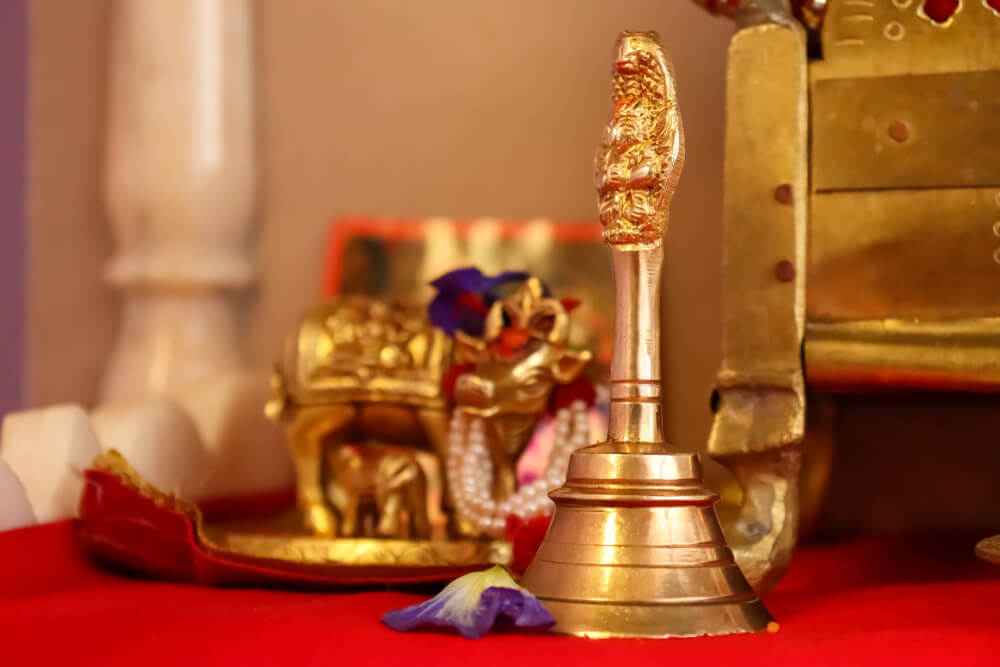
9+ Indian-Inspired Pooja Room Designs
A variety of Pooja room designs are suited for Indian homes. Whatever option you choose, ensure that the pooja room is clean and organized. This will help you focus on your prayers and rituals.
1. Pooja Room With Murals On The Walls
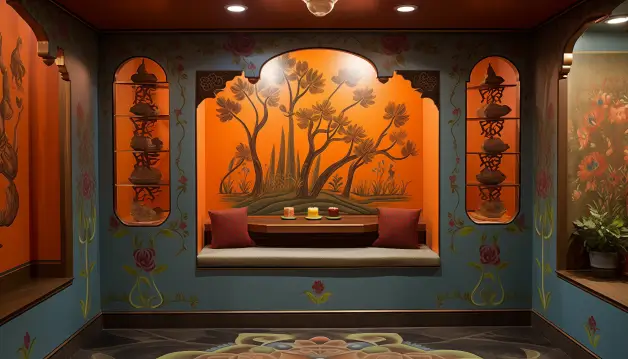
There’s something special about Indian-style pooja rooms. They often have beautiful wall designs that are both intricate and eye-catching.
If you’re looking for some inspiration for your pooja room, here are some of the top wall design ideas:
- Floral Designs: Indian-style pooja rooms often feature beautiful floral designs. You can use stencils to create your floral design, or you can find premade decals at your local craft store.
- Mandala Designs: Mandala designs are another popular choice for the walls of pooja rooms. These circular designs are said to represent the universe, and they can be created using paint, stencils, or decals.
- Om Symbols: The Om symbol is sacred in Hinduism and is often used in Indian-style pooja rooms. You can find decals and stickers of the Om symbol or paint it onto your walls yourself.
- Ganesh Symbols: Ganesh is the Hindu god of success, and his symbols are often used in Indian homes as a sign of good luck.
2. Home Corner, Pooja Room
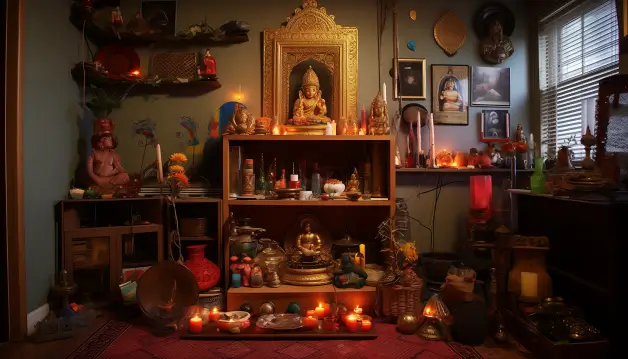
Indian families usually have a home corner or room set aside for worship, called a pooja room. The design of the pooja room should reflect the family’s religious beliefs and traditions.
There are many different ways to design a pooja room. Some families prefer to keep it simple, with just a few essential items. Others go all out with elaborate altars and decorations for their home corners.
Here are some of the most popular design ideas for Indian-style pooja rooms:
- Traditional altar: A traditional altar is the most common type of pooja room design. It usually features a central shrine with an image or statue of the deity being worshipped. There may also be other smaller shrines for other gods. The altar is usually decorated with flowers, lights, and incense.
- Modern altar: A modern altar is similar to a traditional one but is often more minimalistic in design. It may feature a central shrine with an image or statue of the deity, or it may be simply decorated with candles or flowers.
- Temple style: A temple-style pooja room is designed to resemble a Hindu temple. It usually has an inner sanctum.
3. Open Pooja Rooms In Indian Households
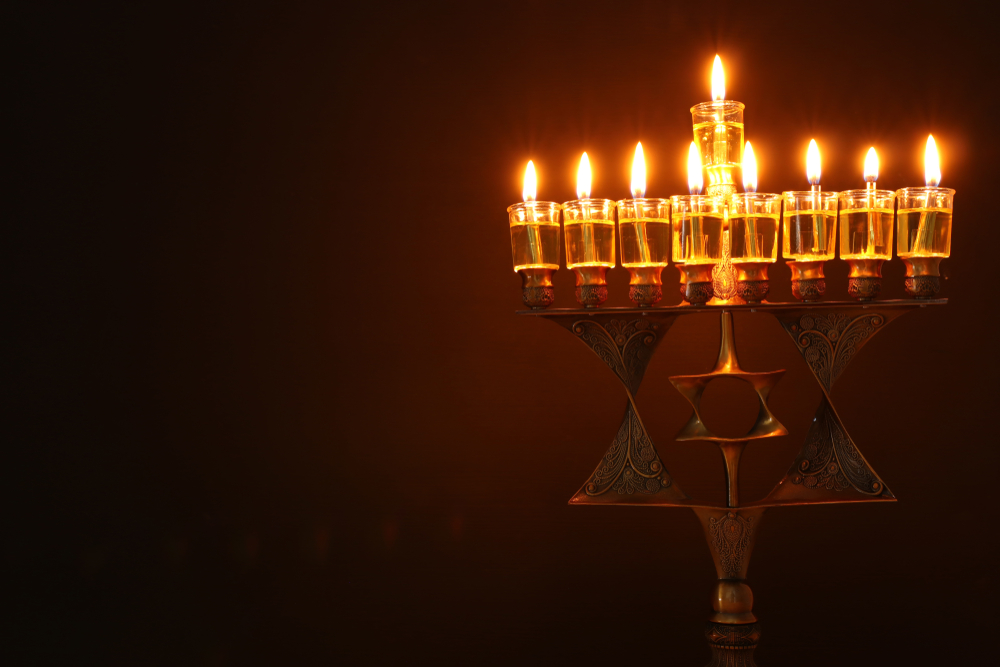
Open pooja rooms can also be designed to reflect the traditional architecture of India. This can be accomplished by incorporating elements such as pillars, arches, and detailed carvings. These pooja rooms can be designed in several ways, depending on the space available and the aesthetic preferences of the family.
Some common design elements for pooja rooms include flowers, leaves, and other natural motifs. These elements can be used to create a serene and peaceful atmosphere in which to worship.
4. Traditional Indian Pooja Room
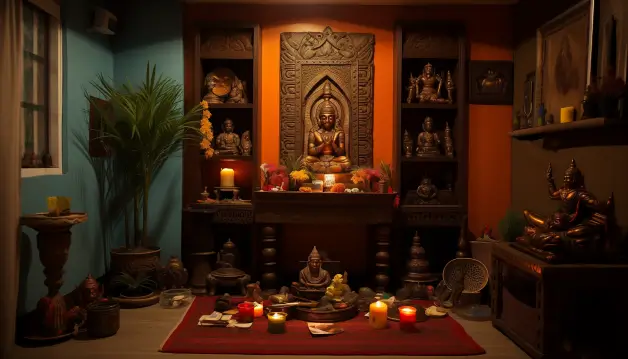
This pooja room is usually decorated with Indian artwork and images of the gods. The altar is generally made of stone or marble and is placed in the centre of the room.
5. Minimalist Pooja Room
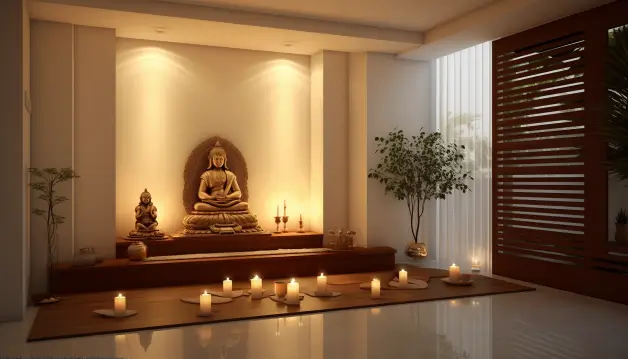
This type of pooja room is more modern and minimalistic. The altar is usually made of wood or metal and is often placed in the corner of the room.
6. Freestanding Pooja Rooms
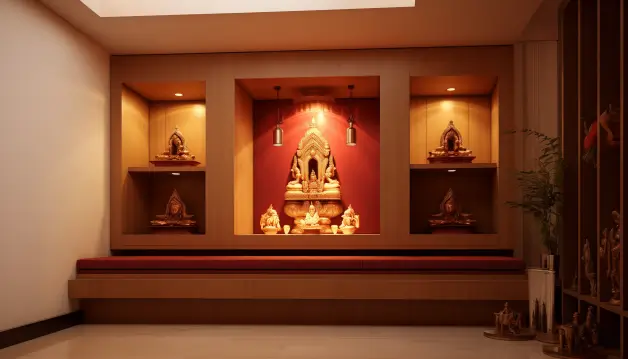
Pooja rooms can be either freestanding or built-in. Freestanding pooja rooms are easier to construct and can be placed anywhere in the house. However, built-in pooja rooms are permanent and cannot be moved once built.
When designing a free-standing Pooja room, it is essential to consider the following factors:
- The size of the room: The room should be big enough to accommodate all the deities worshipped.
- The room’s location: The room should be in a quiet and secluded area of the house.
- The room’s orientation: The room should be facing east so sunlight can enter it during puja.
- The room’s décor: The interior décor should be simple and elegant, with the minimum amount of furniture and decoration. Pooja rooms can be decorated with beautiful paintings of Indian gods and goddesses or photos of family members who have passed away.
7. Wooden Cabinet Pooja Room
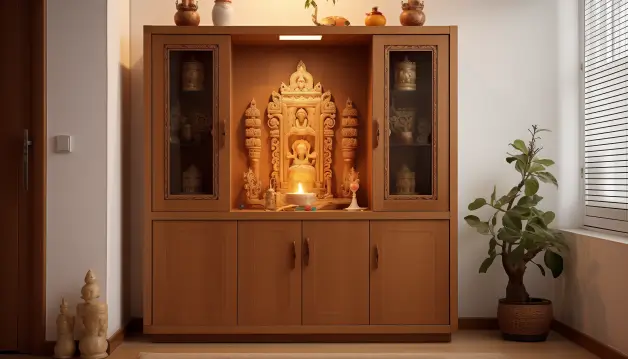
If you want to keep your Pooja room ideas traditional, opt for a simple yet elegant design. A wooden cabinet with carvings or an intricately designed metal cupboard can be used to store all your puja items. Place a small stool or table in front of the cabinet to easily reach the items when needed. Add a few diyas or candles around the room to create a peaceful and calming ambiance.
8. Customised Mandir Pooja Room Design
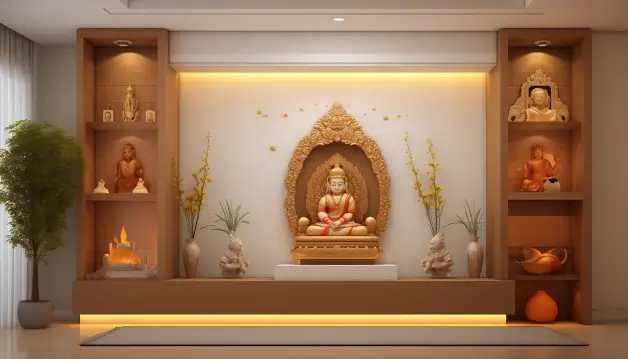
A mandir is a small shrine where you can place your idols or pictures of deities. You can either buy a ready-made mandir or get one custom-made according to your preferences. Place it in the corner of the room so that it becomes the focal point. Decorate the mandir with fresh flowers, incense sticks, and diyas.
9. Arched Pooja Room
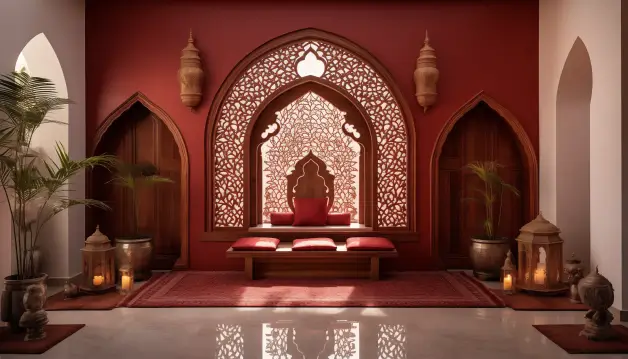
Arched Pooja rooms are a popular choice for Indian homes. They add an element of sophistication and can be easily customized to match the rest of your home décor.
If you have an arched Pooja room, there are a few things you can do to make it look even more beautiful.
- Hang a beautiful tapestry on the wall.
- Place a statue or figurine of a god or goddess on an altar.
- Decorate the area with fresh flowers.
- Use traditional Indian-style lanterns to add light and decoration.
- Place a metal or wooden statue of the elephant in the room.
- Add a beautiful water fountain in the corner of the room.
- Use colourful rugs or carpets to add colour and warmth to the room.
10. Pooja Room With ‘Jaal Design’
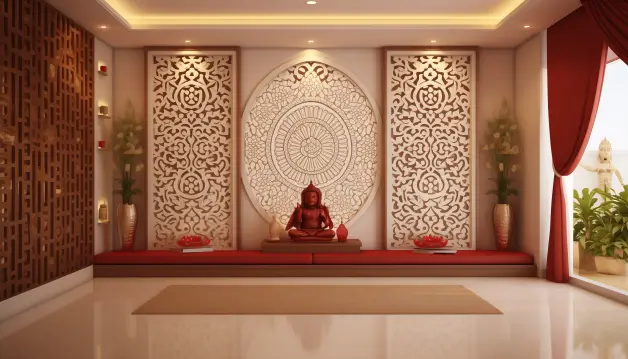
Designing a ‘Jaal-style’ Pooja room can be a great way to add a touch of Indian culture to your home. This type of design is characterized by its intricate patterns and delicate details.
Some essential elements of a Jaal-style Pooja room include a beautiful altar, an intricately designed door, and detailed jaali work.
If you want to create a Jaal-style Pooja room in your home, here are some tips to get you started:
Useful Tips
Designing a pooja room is personal, as each family has religious traditions. However, some general tips can help create a beautiful and functional space.
Here are some tips for designing an Indian-style pooja room:
1. Place the altar against the wall, so it is visible when entering the room.
2. Use bright colours for the walls and ceiling to create a festive atmosphere.
3. Decorate the altar with flowers, statuary, and other items essential to your religion.
4. Include a small table or shelf for offerings such as food and flowers.
Bottom-line
No matter what design style you choose for your pooja room, it should be a space that makes you feel calm and peaceful. Worship should be a time to connect with your deity and find inner peace.
